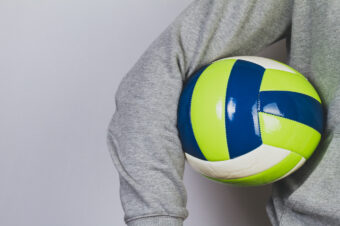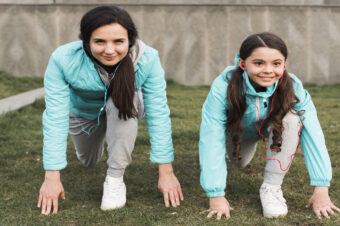

3 Exercises Add Distance to Your Golf Swing
High School GolfLEVELUP INSIDERS February 27, 2019 SportStars 0

Want to add distance to your golf swing? Here’s how: Add Stability!
Every golfer who plays the game wants to hit the golf ball farther and add distance to his golf swing. This game is tough enough as it is, so adding 10-15 yards would definitely help.
There are lots of ways to add yardage to your game: new clubs, taking lessons, working out, the list goes on.
From a fitness perspective, most of us think about getting stronger or more powerful. And if you do those things, you may gain some distance and you are correct to think that it will help.
It’s not the only way though to add distance.
Believe it or not, exercise that involves stability will work wonders for your distance enhancement.
Yes, exercises where you don’t move your body at all will help you hit the ball longer – and drop your scores!
Here is how.
An easy way you can think about stability is how well you control a certain movement.
There are different types of stability: static and dynamic. Static means not moving. This is the more strict version of stability.
The other type is dynamic; this is where we move through ranges of motion under control.
The golf swing involves (requires even) both types of stability and at different times. It’s one of the reasons the game is so hard!
So how can you add distance by increasing your stability?
It’s all about efficiency!
Most of us amateurs are amazed at the distance some of these small-statured golfers on the Tour get. With upwards of 320-330 yard drives out of a guy or girl just 5 foot 8 weighing 155 lbs? Crazy, right?
So, how are they doing it? Throughout the swing, the body creates a ton of energy and force that is conducted from the ground and transferred into the body.
This energy ultimately ends up moving out of the golf club and into the ball.
BOOM! 320-yard drive here we come.
But the body has to be ready and stable to withstand that energy transfer. If the body has a break in the flow of energy, it will leak it out and there goes our distance.
The major areas for energy to move through the body are the hips, core, and arms. Here are three exercises that you can work on to help add stability in these areas and ultimately gain distance.
- Glute Bridge: The glute bridge is an exercise that involves activation of our posterior chain, mostly the glutes (your butt). They are the drivers of the hips in the downswing. To perform the glute bridge, lay on your back with your feet flat on the ground and knees bent. Your heels should be about 6-8 inches from your glutes. From here, press your heel into the ground, squeeze those glutes, and raise your hips up. If you want to work on static stability then hold the position for 20-30 seconds. Moving in and out of the bridge would be a form of dynamic stability for the hips.
Pro Tip: Want to kick it up a notch? Do a single leg glute bridge! It’s the same motion as the double leg but now you have to create much more stability through the hips and core. Give it a go.
2.) Pallof Holds: Once you have a stable hip system, you can move on to the core. This is the next place the energy you created will travel. The Pallof Hold is an exercise where staying still is paramount. You can think of it as a standing plank, and planks of wood don’t bend or sway! For this exercise you will need a light to medium tension band or weighted cable system. Grab the band with both hands in a stable driver posture. Move away from the wall to a desired tension. Your hands should stay firmly situated at the midline of your body; don’t let them move in any direction. Hold for 30-45 seconds. You’ll feel this all the way down on side of the body. Repeat on the opposite side.
Now that you have created a good sense of stability through your hips and core, let’s move to the last stop: the shoulders and arms.
These segments aide in pulling and pushing the club through for a solid finish. The shoulder joint is a very mobile joint meaning it has the ability to move in many different directions. Sometimes it has too much movement, making it unstable and a possible place for energy to leak.
Here is a great exercise to help with shoulder stability.
3.) Statue of Liberty: This exercise is a 2-for-1! It will not only work the shoulders but also the core. You’ll need a light to medium weighted dumbbell or kettlebell. All you have to do is hold the weight directly overhead with a straight arm and body. Brace the core and focus on pressing the weight up as high as possible without losing good posture. Hold for 30-45 seconds then repeat on the opposite side.
By mastering these stability moves you’ll have a great foundation for energy to transfer efficiently. As a result, you’ll notice more distance, less risk for injury, and much more fun on the course. Enjoy!
[bsa_pro_ad_space id=1]










No comments so far.
Be first to leave comment below.